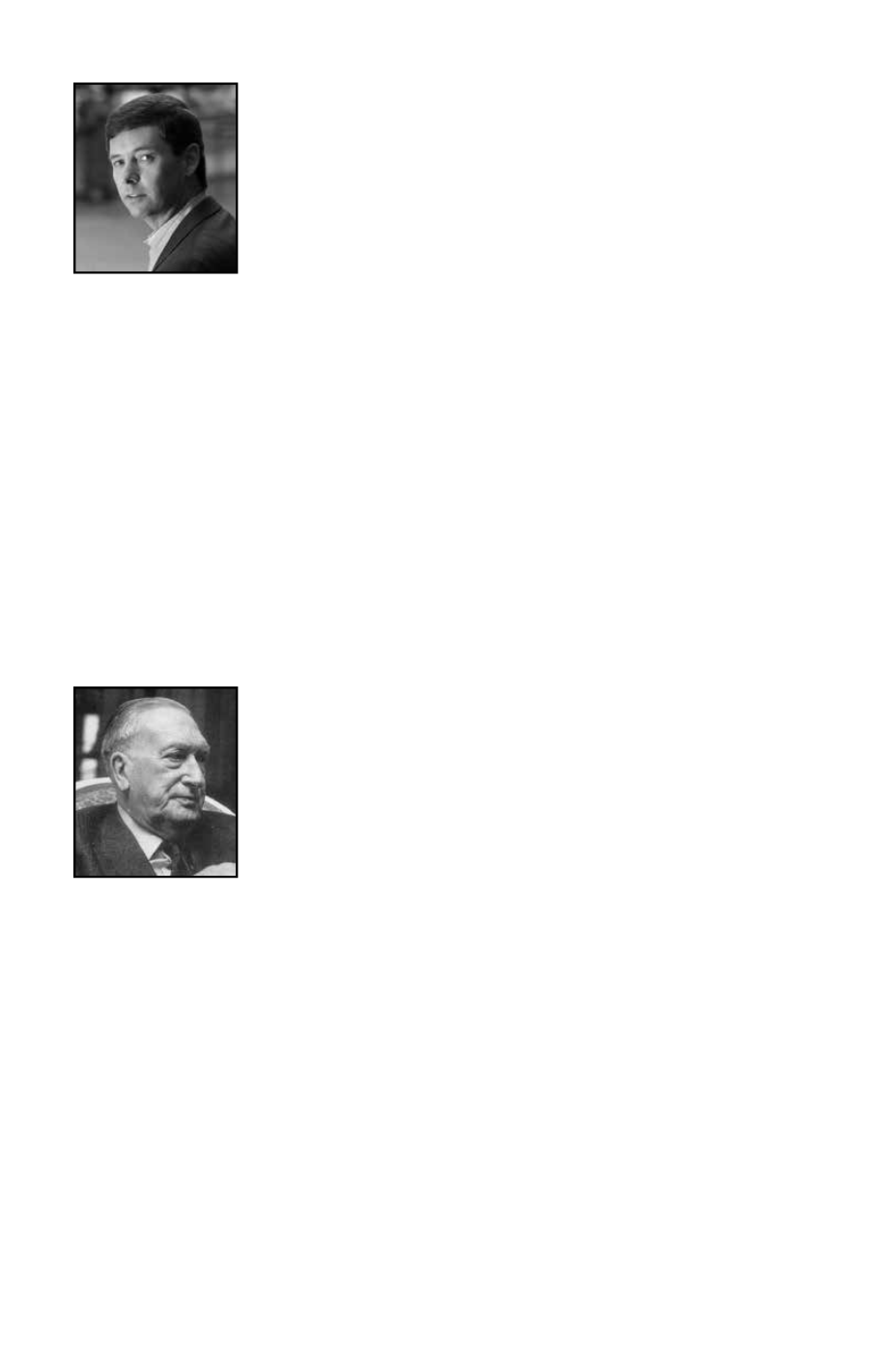
36
| gpmf.org
Wednesday, June 24, 2015
VIOLA CONCERTO (1928-1929)
Sir William Walton (1902-1983)
Walton’s Viola Concerto is scored for pairs of woodwinds plus
piccolo, English horn and bass clarinet, four horns, two trumpets,
three trombones, timpani, harp and strings. The performance
time is 27 minutes. This is the first performance of this work by
the Grant Park Orchestra.
After William Walton left Oxford in 1920 without a degree
(excellent in music, shaky in academics), he lived in London for the next decade with the
Sitwells: Osbert (poet and novelist) and Sacheverell (poet and art critic), both of whom
he had met at university, and their sister, Edith (poet and critic). Not only was Walton
immensely stimulated by such brilliant intellectual company, but the Sitwells’ generosity
allowed him to escape the financial difficulties suffered by most young composers. In
1922, he wrote
Façade
, an iconoclastic “entertainment” for the Sitwells’ drawing room
comprising musical backgrounds for some of Edith’s most piquant poems. Walton’s
reputation as a sly
enfant terrible
was not diminished by his immersion in jazz during
1923-1924, when he said he was “writing and scoring fox-trots for the Savoy Orpheus
Band and working at a monumentally planned concerto for two pianofortes, jazz band
and orchestra.” (1924 was also the year of Gershwin’s
Rhapsody in Blue
.) All of this
music has disappeared (Walton, a slow and meticulous worker, may have destroyed it
himself), but the drive and freedom of its jazz rhythms were a potent influence on his
first important orchestral score, the
Portsmouth Point Overture
of 1925.
In 1928, Walton undertook a piece for orchestra, broader in scope and more serious in
expression than
Portsmouth Point
, whose genesis he recalled in a 1962 interview: “It was
[conductor Sir Thomas] Beecham who suggested my writing a viola concerto for Lionel
ROBERTO DÍAZ
, a violist of international reputation, is President
andCEOof theCurtis Institute of Music in Philadelphia and former
Principal Viola of the Philadelphia Orchestra. During his tenure
at Curtis, Díaz has founded the highly successful Curtis On Tour
program, performing chamber music side-by-side with Curtis
students and other faculty and alumni of the school, overseen
the construction of a significant new building that doubled the
size of the school’s campus, introduced classical guitar and string
quartet programs, launched the public performance series Curtis
Summerfest, and developed lasting collaborations with other music and arts institutions
in Philadelphia and throughout the world. As a soloist, Díaz collaborates with leading
conductors of our time on stages across North and South America, Europe and Asia. In
addition to performing with major string quartets and pianists in chamber music series
and festivals worldwide, he has toured Europe, Asia and the Americas as a member
of the Díaz Trio with violinist Andrés Cárdenes and cellist Andrés Díaz; the Trio has
recorded for the Artek and Dorian labels. He has also recorded music of Vieuxtemps,
Leshnoff, Brahms and others on the Naxos label, Jacob Druckman’s Viola Concerto
with Wolfgang Sawallisch and the Philadelphia Orchestra on New World Records,
and concertos by Walton and Peter Lieberson on Bridge Records. Mr. Díaz received a
bachelor’s degree from the New England Conservatory of Music and a diploma from
Curtis, where his teacher was his predecessor at the Philadelphia Orchestra, Joseph de
Pasquale. He received an honorary doctorate from Bowdoin College and was awarded
an honorary membership by the national board of the American Viola Society. In the
fall of 2013, Roberto Díaz became a member of the prestigious American Philosophical
Society founded by Benjamin Franklin. He plays the ex-Primrose Amati viola.


